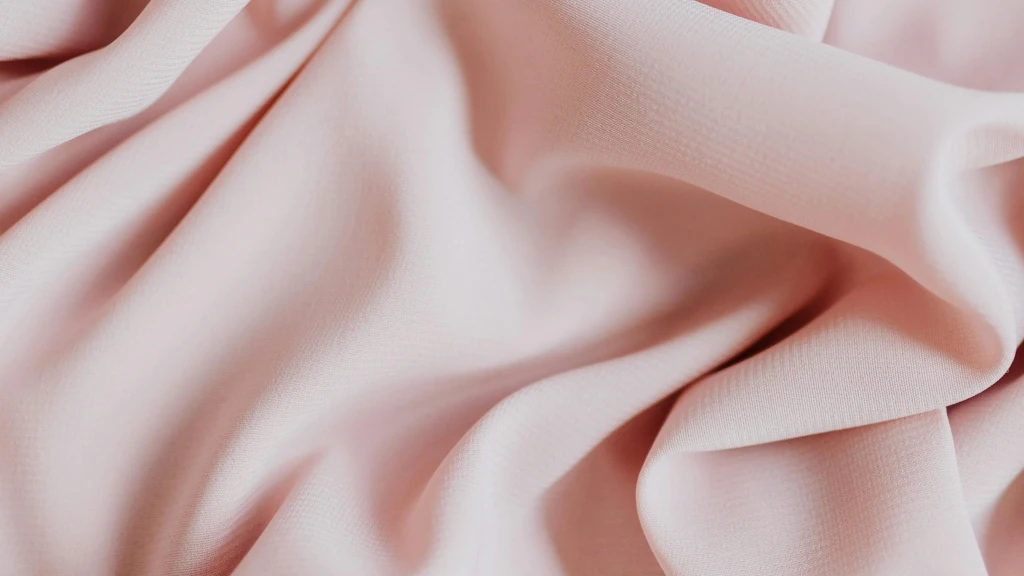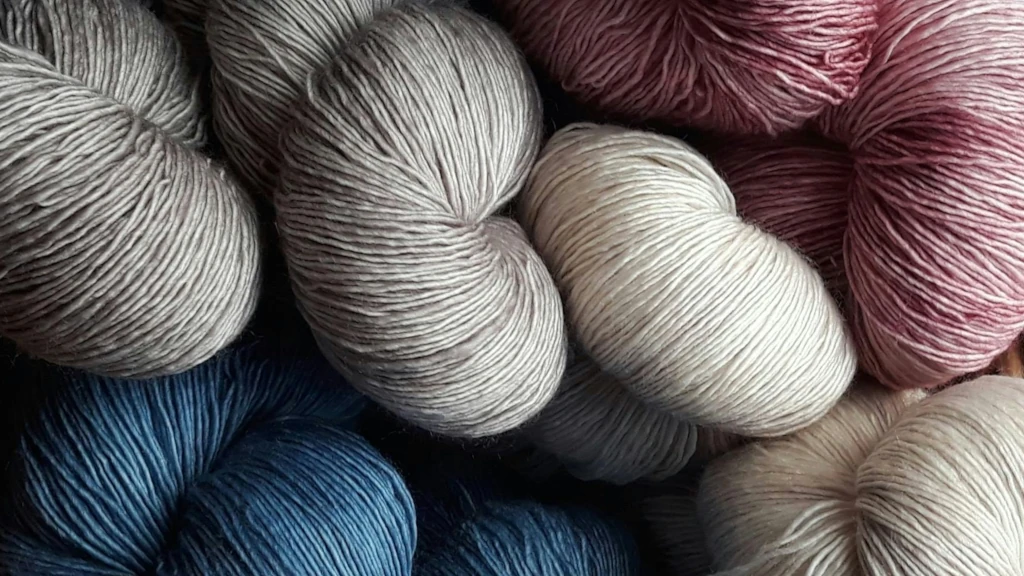Textile Guide Part 3: Polyester 101 – Everything About the Most Popular Fabric in the World

The Truth About Polyester: How It’s Made, What It Does to the Environment, and How to Recycle It
After our introduction to this Textile Guide and part 2 of our series it is time to introduce you to a synthetic fabric that is widely used in the textile and clothing industry. It is durable, wrinkle-resistant, and easy to wash and dry. However, polyester also has a dark side: it is made from fossil fuels, consumes a lot of energy and water, and causes pollution and greenhouse gas emissions throughout its life cycle. In this blog post, we will explore how it is made, what are its environmental impacts, and what are some of the recycling options to reduce its footprint.
Being a type of plastic that is derived from petroleum, a non-renewable resource that is extracted from the earth. It is also known as polyethylene terephthalate, or PET, which is the same material used to make plastic bottles. To make it, PET is melted and extruded into thin filaments, which are then spun into yarns and woven or knitted into fabrics. It can also be blended with other natural or synthetic fibers, such as cotton, wool, or nylon, to create different properties and textures.
This fabric is one of the most popular fabrics in the world, accounting for about 65% of the global fiber market. It is used for various purposes, such as clothing, bedding, carpets, upholstery, and industrial applications.
It has many advantages, such as:
- strong and resistant to abrasion, tearing, and shrinking.
- easy to care for and does not wrinkle or fade easily.
- lightweight and dries quickly.
- Can be dyed in various colors and patterns.
- Can be modified to create different effects, such as stretch, shine, or softness.
However, polyester also has many disadvantages, especially for the environment and human health. Some of the drawbacks are:
- Made from fossil fuels, which contribute to climate change and resource depletion.
- Requires a lot of energy and water to produce, which increases its carbon footprint and water footprint.
- Releases toxic chemicals and microplastics during its production and use, which pollute the air, water, and soil, and harm wildlife and human health.
- Not biodegradable and takes hundreds of years to decompose, which adds to the problem of waste management and landfill space.
What is Polyester?
Its a synthetic fabric that is made from plastic, specifically polyethylene terephthalate (PET). PET is a polymer, which means it is a long chain of molecules that are linked together by chemical bonds. PET is derived from petroleum, a fossil fuel that is extracted from the earth and refined into various products. Petroleum is a non-renewable resource that is in limited supply and contributes to greenhouse gas emissions and climate change.
To make it, PET is melted and extruded into thin filaments that are then spun into yarns. The yarns can be woven or knitted into fabrics that have different properties and uses. The fabrics are durable, wrinkle-resistant, easy to wash and dry, and can be dyed in various colors. It is also blended with other natural or synthetic fibers, such as cotton, wool, or nylon, to create fabrics with different characteristics and performance.
It is used for a wide range of applications, such as clothing, bedding, upholstery, carpets, curtains, and industrial products. According to the Council of Fashion Designers of America, this fabric is the most widely-used clothing fiber in the world. This type of clothing is popular because it is affordable, versatile, and fashionable, but it also has some drawbacks that we will discuss later.
Production Process and CO2 Emissions
The production process involves several chemical and physical steps, which consume a lot of energy and emit a lot of carbon dioxide (CO2), the main greenhouse gas that causes global warming. According to a study by the Ellen MacArthur Foundation, the textile industry as a whole is responsible for 1.2 billion tonnes of CO2 emissions per year, which is more than the emissions from international flights and maritime shipping combined . It alone accounts for about 40% of these emissions, or 480 million tonnes of CO2 per year .
The main stages of the production process are:
- Naphtha reforming: Naphtha, a by-product of crude oil refining, is heated and mixed with steam and a catalyst to produce a mixture of hydrocarbons, including ethylene and paraxylene, the main raw materials.
- Paraxylene oxidation: Paraxylene is oxidized with oxygen and a catalyst to produce terephthalic acid (TPA), a white crystalline powder that is the main ingredient.
- Ethylene oxide production: Ethylene is reacted with oxygen and a catalyst to produce ethylene oxide, a colorless gas that is used to make ethylene glycol, another ingredient.
- Ethylene glycol production: Ethylene oxide is reacted with water to produce ethylene glycol, a clear liquid that is mixed with TPA to form polyester.
- Polymerization: TPA and ethylene glycol are heated and pressurized to form a viscous liquid called polyethylene terephthalate (PET), which is the basic polymer. This can be done in two ways: direct esterification, which uses TPA and ethylene glycol directly, or ester interchange, which uses dimethyl terephthalate (DMT) and ethylene glycol as intermediates.
- Spinning: PET is melted and extruded through a spinneret, a device with tiny holes that shape the liquid into thin filaments. The filaments are then cooled and solidified, and wound onto bobbins or cut into staple fibers. The filaments can be stretched and twisted to create different types of yarns, such as filament yarn, textured yarn, or staple yarn.
- Weaving or knitting: The yarns are then woven or knitted into fabrics, using various machines and techniques. The fabrics can be dyed, printed, or finished to create different colors, patterns, and effects.
Each of these stages requires a lot of energy, mainly from fossil fuels, such as coal, natural gas, or oil. The energy consumption and CO2 emissions vary depending on the type and efficiency of the technology used, the source and quality of the raw materials, and the location and scale of the production. According to a study by the World Bank, the average energy consumption and CO2 emissions for the production of 1 kg of polyester fiber are 125 MJ and 5.5 kg, respectively. However, these values can range from 85 to 170 MJ and from 3.8 to 9.5 kg, depending on the factors mentioned above .
To reduce the energy consumption and CO2 emissions in the production process, some of the possible measures are:
- Improving the efficiency and performance of the equipment and processes, such as using more advanced catalysts, optimizing the reaction conditions, and recovering the waste heat and chemicals.
- Switching to renewable or low-carbon energy sources, such as solar, wind, hydro, or biomass, instead of fossil fuels.
- Using recycled or bio-based raw materials, such as recycled PET bottles or bio-based ethylene glycol, instead of virgin petroleum-based materials.

Environmental Impacts
Besides the energy consumption and CO2 emissions, the production and use of polyester also have other negative impacts on the environment, such as water consumption and pollution, chemical use and toxicity, and microplastic release and accumulation.
Water consumption and pollution:
The production requires a lot of water, mainly for cooling, washing, and dyeing. According to a study by the Water Footprint Network, the average water footprint of its production is 40 liters per kg of fiber, which is lower than that of cotton (10,000 liters) or wool (500 liters), but higher than that of nylon (10 liters) or acrylic (30 liters).
However, the water footprint can vary significantly depending on the type and quality of the water used, the efficiency and treatment of the water systems, and the location and climate of the production. For example, the water footprint of polyester production in China, the largest producer in the world, is estimated to be 70 liters per kg of fiber, which is almost twice the global average.
The production also generates a lot of wastewater, which contains various pollutants, such as suspended solids, organic matter, heavy metals, and hazardous chemicals. These pollutants can affect the quality and availability of water resources, and harm the aquatic ecosystems and human health. For instance, the dyeing and finishing of polyester fabrics can produce wastewater with high color, pH, temperature, and chemical oxygen demand (COD), which can reduce the dissolved oxygen and biodiversity in the water bodies, and cause eutrophication and algal blooms.
To reduce the water consumption and pollution, some of the possible measures are:
- Improving the efficiency and performance of the water systems, such as using closed-loop or zero-liquid discharge systems, recycling and reusing the water, and recovering the heat and chemicals.
- Switching to waterless or low-water technologies, such as dry dyeing, digital printing, or plasma finishing, instead of conventional wet processes.
- Using eco-friendly or natural dyes and chemicals, such as plant-based or biodegradable dyes, or enzyme-based or bio-based chemicals, instead of synthetic or hazardous ones.
Chemical use and toxicity:
The production involves the use of various chemicals, such as catalysts, solvents, stabilizers, modifiers, and additives, which are needed to create and enhance the properties and performance of the fiber and fabric. Some of these chemicals are toxic, persistent, or bioaccumulative, and can cause adverse effects on the environment and human health.
For example, antimony, which is used as a catalyst in the polymerization of PET, is a heavy metal that can accumulate in the soil and water, and affect the nervous, respiratory, and cardiovascular systems. Ethylene oxide, which is used to produce ethylene glycol, is a volatile organic compound (VOC) that can evaporate into the air, and cause irritation, inflammation, and cancer. Phthalates, which are used as plasticizers to make the fiber more flexible, are endocrine disruptors that can interfere with the hormonal and reproductive.
Microfiber shedding:
Also it poses a threat to the environment and human health when it is washed and worn. It can release tiny synthetic fibers, called microfibers, that are too small to be filtered by washing machines or wastewater treatment plants. These microfibers can end up in rivers, lakes, and oceans, where they can be ingested by fish and other marine animals. Microfibers can also accumulate in the food chain and reach humans through seafood consumption. Microfibers can carry toxic chemicals, such as pesticides, flame retardants, and plasticizers, that can cause hormonal disruption, cancer, and neurological disorders.
According to a study by Plymouth University, one wash could release 4,000 microfibers per gram of fabric, but also up to 400 microfibers are shed simply by wearing them. These contribute to 31% of plastic pollution in the ocean and cause substantial harm to marine life. To reduce microfiber shedding, it is advisable to wash it less frequently, use cold water and gentle cycles, and use a filter or a bag to catch the microfibers. It is also important to develop fabrics that are more resistant to shedding and to support research on the effects of microfibers on the environment and human health.
How Polyester Can Be Recycled
Recycling is one of the ways to mitigate the environmental impacts and to promote a circular economy. A circular economy is a system that aims to eliminate waste and keep resources in use for as long as possible. Recycling can save energy, reduce emissions, conserve water, and prevent pollution. Recycling can also reduce the dependence on petroleum and create new economic opportunities and jobs.
There are two main types of polyester recycling: mechanical and chemical:
Mechanical recycling:
This involves shredding, melting, and extruding the polyester waste into new fibers or pellets, which can be used to make new products. This is a simple and low-cost process, but it can degrade the quality and performance of the fiber over time, and it cannot handle blended or dyed fabrics.
Chemical recycling:
This involves breaking down the waste into its molecular components, such as ethylene glycol and terephthalic acid, which can be purified and re-polymerized into new fibers or pellets. This is a more complex and expensive process, but it can preserve the quality and performance of the fiber, and it can handle blended or dyed fabrics.
Bio-based recycling:
This involves using biological agents, such as enzymes or microorganisms, to degrade the waste of this fabric into its molecular components, which can be purified and re-polymerized into new fibers or pellets. This is a novel and promising process, but it is still under development and not yet commercially available. It has the potential to reduce the energy consumption and environmental impacts of recycling, and it can handle blended or dyed fabrics.
These recycling options can help reduce the waste and emissions of production, and extend the life cycle of the fiber. However, they also face some challenges, such as the availability and quality of the waste feedstock, the efficiency and scalability of the recycling technologies, and the market demand and regulations for the recycled products. Therefore, more research and innovation, as well as collaboration and coordination among the stakeholders, are needed to make recycling more feasible and effective.
Conclusion - How to Choose Better Fabrics for Your Clothes and the Planet
This synthetic fabric has many advantages, such as durability, versatility, and affordability. However, it also has many disadvantages, especially for the environment and human health. Its made from fossil fuels, consumes a lot of energy and water, and causes pollution and greenhouse gas emissions throughout its life cycle. It also releases toxic chemicals and microplastics during its production and use, which can harm the aquatic ecosystems and human health. Polyester is not biodegradable and takes hundreds of years to decompose, which adds to the problem of waste management and landfill space.
On the one hand it is a fabric that has changed the world, but it also has a dark side. By understanding how its made, what it does to the environment, and how to recycle it, we can make informed and responsible choices about our fashion and consumption habits. We can also contribute to the development and adoption of more sustainable and circular practices and products, and help create a better future for ourselves and the planet.
FAQ - Everything You Need to Know About the Synthetic Fabric:
What is polyester?
It is a synthetic fabric that is made from polyethylene terephthalate (PET), a type of plastic that is derived from petroleum, a non-renewable resource. Polyester is strong, durable, wrinkle-resistant, and easy to wash and dry. It is used for various purposes, such as clothing, bedding, carpets, upholstery, and industrial applications.
Why is polyester bad for the environment?
It consumes a lot of energy and water, and causes pollution and greenhouse gas emissions throughout its life cycle. This synthetic fabric is made from fossil fuels, which contribute to climate change and resource depletion. It also releases toxic chemicals and microplastics during its production and use, which can harm the aquatic ecosystems and human health. Also it is not biodegradable and takes hundreds of years to decompose, which adds to the problem of waste management and landfill space.
How can polyester be recycled?
Yes, it can be recycled into new fibers or pellets, which can be used to make new products. There are three main methods: mechanical, chemical, and bio-based. Mechanical recycling involves shredding, melting, and extruding the polyester waste into new fibers or pellets. Chemical recycling involves breaking down the waste into its molecular components, which can be purified and re-polymerized into new fibers or pellets. Bio-based recycling involves using biological agents, such as enzymes or microorganisms, to degrade the polyester waste into its molecular components, which can be purified and re-polymerized into new fibers or pellets.
What are the benefits of recycling polyester?
Recycling can help reduce the waste and emissions of the production, and extend the life cycle of the fiber. It can save energy, water, and raw materials, and reduce the dependence on fossil fuels. Recycling this fiber can also create new economic opportunities and social benefits, such as job creation, income generation, and waste reduction.
What are the challenges of recycling polyester?
The availability and quality of the waste feedstock, the efficiency and scalability of the recycling technologies, and the market demand and regulations for the recycled products. The waste is often mixed with other types of materials, such as cotton, wool, or nylon, which need to be sorted and separated before recycling. Also it is often colored, contaminated, or contain additives, which can affect the quality and performance of the recycled fiber. Recycling technologies are still under development and not yet commercially available, and they require high investment and maintenance costs. Recycling products are still not widely accepted or preferred by the consumers or the industry, and they face competition from cheaper or higher-quality alternatives.
What are some examples of recycled polyester products?
Clothing:
Bedding:
It can be used to make bedding products, such as pillows, blankets, sheets, and duvets. Some examples are Buffy, Coyuchi, and Ettitude.
Carpets:
Also it can be used to make carpets and rugs, which can be used for residential or commercial purposes. Some examples are Interface, Mohawk, and Shaw.
How can I tell if a product is made from recycled polyester?
Checking the label:
The label of the product should indicate the percentage and source, such as 100% recycled polyester from PET bottles, or 50% recycled polyester from post-consumer textiles. The label may also have a certification or a logo from a third-party organization, such as the Global Recycled Standard, the Recycled Claim Standard, or the Recycled Polyester Certification.
Checking the quality:
The quality of the product may vary depending on the type and process of recycling. Generally, mechanical recycling produces lower-quality fibers than chemical or bio-based recycling, and blended or dyed fabrics are harder to recycle than pure or white fabrics. It also may affect its appearance, texture, durability, and performance.
Checking the price:
The price may be higher or lower than the conventional polyester product, depending on the supply and demand, the production cost, and the market value. Generally, chemical or bio-based recycling is more expensive than mechanical recycling, and recycled products are more expensive than the virgin version of those products.
How can I reduce my polyester footprint?
Buying less:
The best way to reduce your footprint is to buy less polyester products, and only buy what you need and love. You can also choose quality over quantity, and opt for durable and timeless products that can last longer and reduce waste.
Buying better:
If you need to buy synthetic products, you can choose recycled or bio-based products, which have lower environmental impacts than virgin polyester products. You can also look for products that have certifications or labels that indicate their recycled content and source, and avoid products that have harmful chemicals or additives.
Caring more:
You can also extend the life and value of your clothes by caring for them properly. You can wash them less frequently and at lower temperatures, use gentle detergents and softeners, and avoid dry cleaning and ironing. You can also repair them if they are damaged, or upcycle them if they are outdated.
Disposing wisely:
When you no longer need or want your fabrics, you can dispose of them wisely. You can donate them to charity or sell them to second-hand shops, or swap them with your friends or family. You can also recycle them if they are pure or white, or compost them if they are bio-based. You should avoid throwing them away in the trash, as they will end up in landfills or incinerators, and cause more pollution and emissions.




